If your mind only has the buttons for "bull market" and "bear market," then every decision you make is like flipping a coin.
Written by: Daii
Recently, the question my friends ask me the most is:
"Is the bull market for Bitcoin about to end? Should we sell now?"
After all, Bitcoin has risen to around $120,000, and the price has been stuck there for several weeks. People are starting to feel uneasy:
"Is it at the top? Is the bear market just around the corner?"
That's a good question. But let's turn it around and ask:
If the bear market is indeed lurking behind the $120,000 threshold, what are you prepared to do?
Sell everything and lock in profits?
But what if this is just a "false top," and the next stop is a direct surge to $200,000? Would you end up like those who "got off too early" in 2013, 2017, and 2021, only to chase the price higher later?
This has happened more than once:
- In April 2013, Bitcoin fell from $260 to $70, and the media shouted bear market, only for it to rise to $1,100 seven months later;
- In June 2019, it dropped from $14,000 to $7,000, similarly mistaken for "the end of the bull," only to reach $64,000 in 2021;
- At the end of 2022, after the FTX collapse, Bitcoin plummeted to $16,000, and many sold off their holdings, only for it to rise to $25,000 three months later;
- In the summer of 2023, some finally sold at $31,000, only to watch it soar to $73,000 over the next nine months.
What truly makes people regret is often not "missing the bear market," but mistaking an ongoing trend for the finish line and getting off too early.
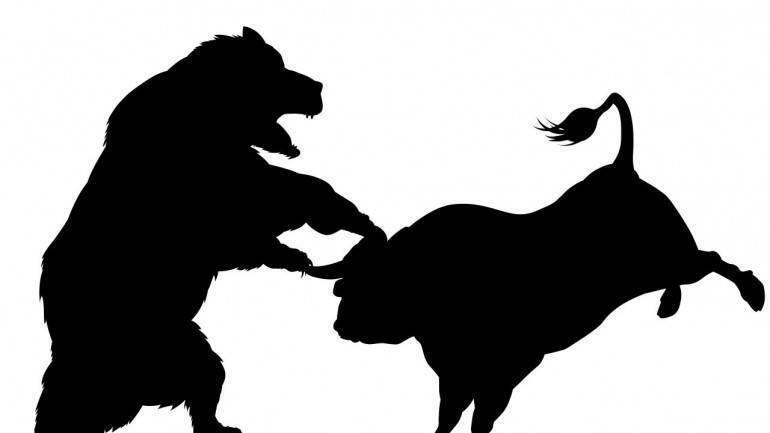
If your mind only has the buttons for "bull market" and "bear market," then every decision you make is like flipping a coin: guessing right means cashing out at a high, guessing wrong means missing the entire cycle.
But the market is not a binary black-and-white photo—it resembles a color palette: besides the bright sun of the bull market and the storm of the bear market, there are long periods of stagnant heat and accelerated upward movements with almost no pullbacks.
Only by seeing all four seasons can you avoid gambling with your life at every crossroads, allowing asset allocation to change clothes with the weather and adjust sails with the wind direction.
To put it more bluntly, the traditional "bull-bear dichotomy" is actually too crude.
This isn't just my opinion; an investment researcher named Jesse B. Mackey provided a clearer map years ago—expanding from the black-and-white world of bulls and bears to a colorful four-quadrant market: bull, bear, wolf, and eagle.
—This "seasonal revolution" in the investment world has only just begun.
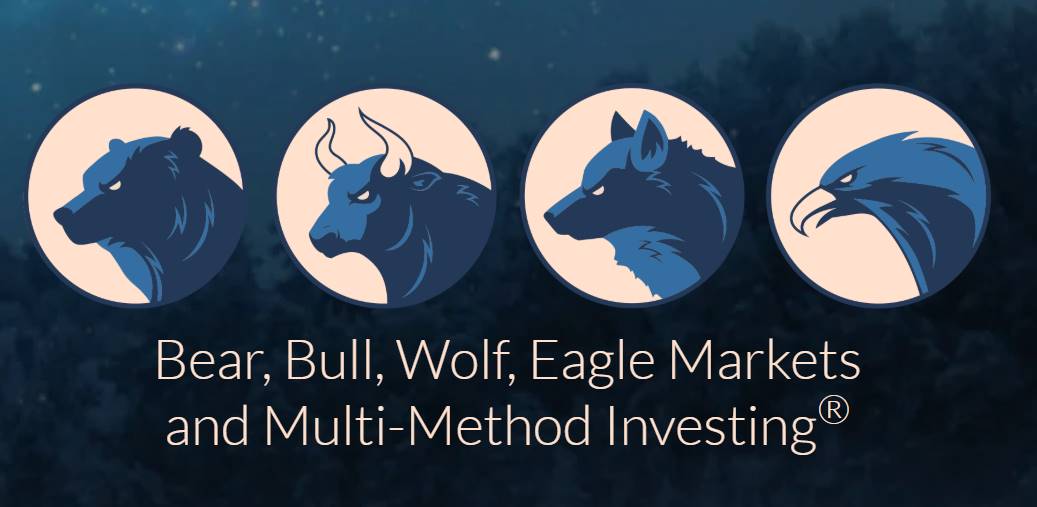
1. From Bull and Bear to Wolf and Eagle: Returning the Market Palette to Investors
In the past, most of us were accustomed to dividing the market into two colors—upward is a bull market, downward is a bear market.
Rising means "full of red light," while falling means "ice and snow."
But Jesse B. Mackey proposed a market depiction that is closer to reality. He presented a more nuanced palette, telling us:
"What you see is just a corner of the black-and-white world. The real market is a colorful map."
In addition to the classic roles of bull and bear, he added two other often-overlooked but very common protagonists—wolf market (Wolf) and eagle market (Eagle). This is not just for the sake of concept; it stems from his detailed dissection and classification of every daily chart of the S&P 500 from 1950 to 2017, revealing statistical truths.
Next, let’s get to know these four types of "market weather":
🐻 1.1 Bear Market (Bear)
Standard Definition: A cumulative decline of more than 20% from the recent high.
Climate Characteristics: A cold wave strikes, the market feels like a sudden power outage, trading volume surges, and the fear index (VIX) skyrockets.
Psychological Feelings: Every green candlestick feels like foam in a tsunami, with your heartbeat dropping along with your account balance.
🐂 1.2 Bull Market (Bull)
Standard Definition: An upward range that does not meet the bear market definition, commonly referred to as a bull market.
Historical Characteristics: Average duration of 2.7 years, with a median increase of about 112%.
Climate Characteristics: A gentle spring breeze, the market gradually rises along the 200-day moving average, and confidence quietly returns.
Investment Rhythm: Dollar-cost averaging, holding long-term, doing nothing is often the most profitable.
🐺 1.3 Wolf Market (Wolf)
Standard Definition: A decline of more than 10% from the high, followed by a rebound to the original position; or two declines of ≥10% without making a new high in between.
Historical Occurrence Rate: About 22% of the market calendar.
Visual Image: Candlesticks look like saw teeth pulling back and forth, direction is unclear, and technical traders are repeatedly "swept away."
Investment Experience: You don’t feel the market is falling, but your account is continuously bleeding. Trend systems often fail in this market, being repeatedly "butchered."
🦅 1.4 Eagle Market (Eagle)
Standard Definition: A rise of ≥30% over the past year, with no pullback of ≥10%.
Historical Occurrence Rate: As high as 34%, more common than bull markets.
Climate Characteristics: It feels like being pulled up by a balloon, with prices continuously rising but volatility unusually calm.
Typical Scenario: You hesitate waiting for a pullback, but the market never looks back; it rises while leaving onlookers behind.
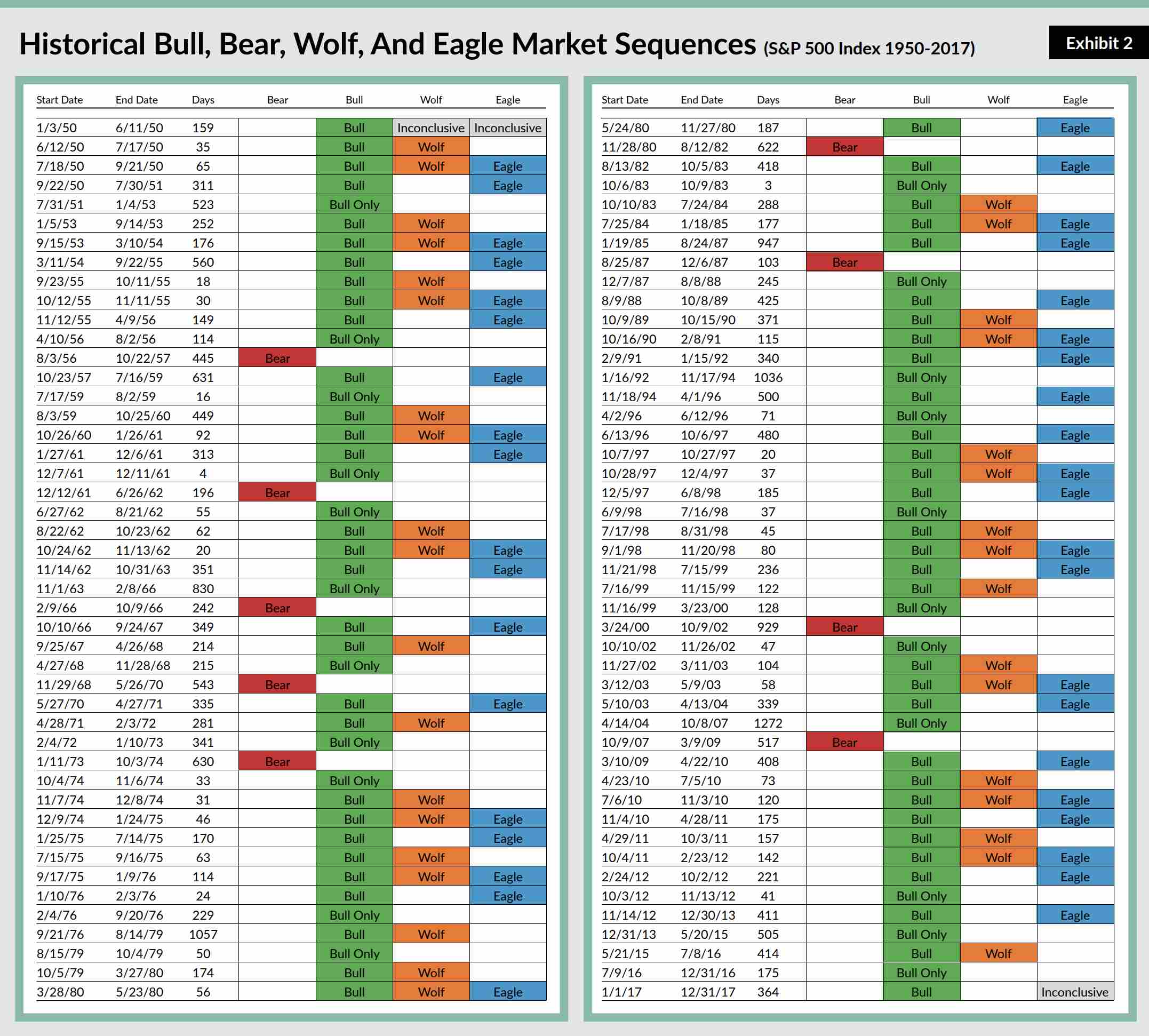
Thus, when Mackey reclassified and analyzed 70 years of daily market data, he discovered a shocking fact:
The combined time of wolf markets and eagle markets accounts for 56%, while the bull market we are most familiar with only accounts for 24%; the bear market is 17%, and the remaining 3% cannot be classified.
What does this mean?
It means that most of the time, we actually live in a market "beyond bulls and bears," yet remain completely unaware.
We wait for pullbacks in eagle markets, chase trends in wolf markets, and frequently change positions in the illusion of a bull market—ultimately either missing out or losing confidence.
The real problem is not "you guessed the bull and bear wrong," but that the map you are using does not even chart the trajectories of wolves and eagles.
So what is the logic behind this? Why has the market transformed in this way?
2. Why Do We Need "Wolf and Eagle"?
In a nutshell:
The black-and-white glasses of bulls and bears can no longer see this colorful and abnormal market.
2.1 Correlation: The Whole Street is Going the Opposite Way
The biggest premise of the bull-bear dichotomy is "up and down alternate": when stocks fall, bonds rise, and vice versa. This is a classic logic of "asset negative correlation" and the ballast of old-fashioned asset allocation.
However, starting in 2022, this "physical law" suddenly became ineffective, as if gravity had disappeared. According to Bank of America’s global research, between 2022 and 2023, the 60-day rolling correlation between U.S. 10-year Treasury bonds and the S&P 500 turned positive multiple times, peaking at nearly 0.6.
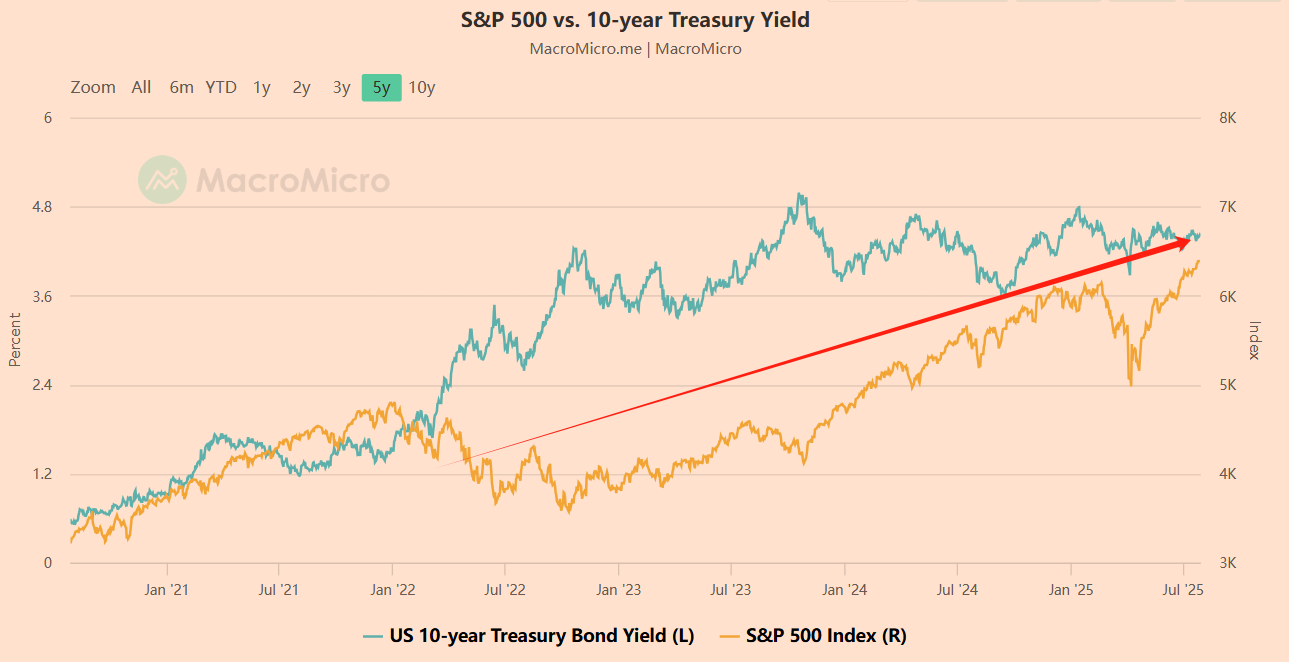
What does this mean? You thought buying bonds in a bear market was a hedge, only to find that both stocks and bonds were in "free fall"; by the end of 2023, they both soared together.
The bull-bear model is only suitable for handling clear images of "one up, one down," but now you are facing the turbulence of "double up, double down," and it has become ineffective.
2.2 Macroeconomic Policy: It Became an Eight-Line Subway
The last super bull market (2009–2020) had a "big background":
Global central banks worked together to inject liquidity, interest rates fell together, and markets rose together.
Now, this highway has split into N branches—by 2023, the Federal Reserve has paused interest rate hikes, the European Central Bank is cautiously lowering rates, while China, India, and Australia are all injecting liquidity. The Bank for International Settlements stated in its 2025 annual report that differentiated monetary policy has become the biggest "shock source" for cross-border capital flows【Source: BIS Annual Report 2025, Chapter III】.
If you are still using the logic of "global easing is a bull market, tightening is a bear market," it’s like holding tickets for two subway lines and running into a transfer station with eighteen lines. It’s dazzling, and you might board the wrong train.
2.3 Bears Aren't Fierce Enough, but Bulls Have Poisonous Fangs
Another default setting of the traditional bull-bear model is:
Bear market = high volatility; bull market = low volatility.
But liquidity bubbles have broken this rhythm.
From 2021 to 2022, the U.S. stock market had more than 46 days with intraday volatility exceeding 2%, more than double that of previous bull markets. By the first quarter of 2024, Bitcoin rose 70% after the ETF launch, yet the 30-day volatility dropped below 25%—completely following the "low volatility, fast rise" script of the eagle market.
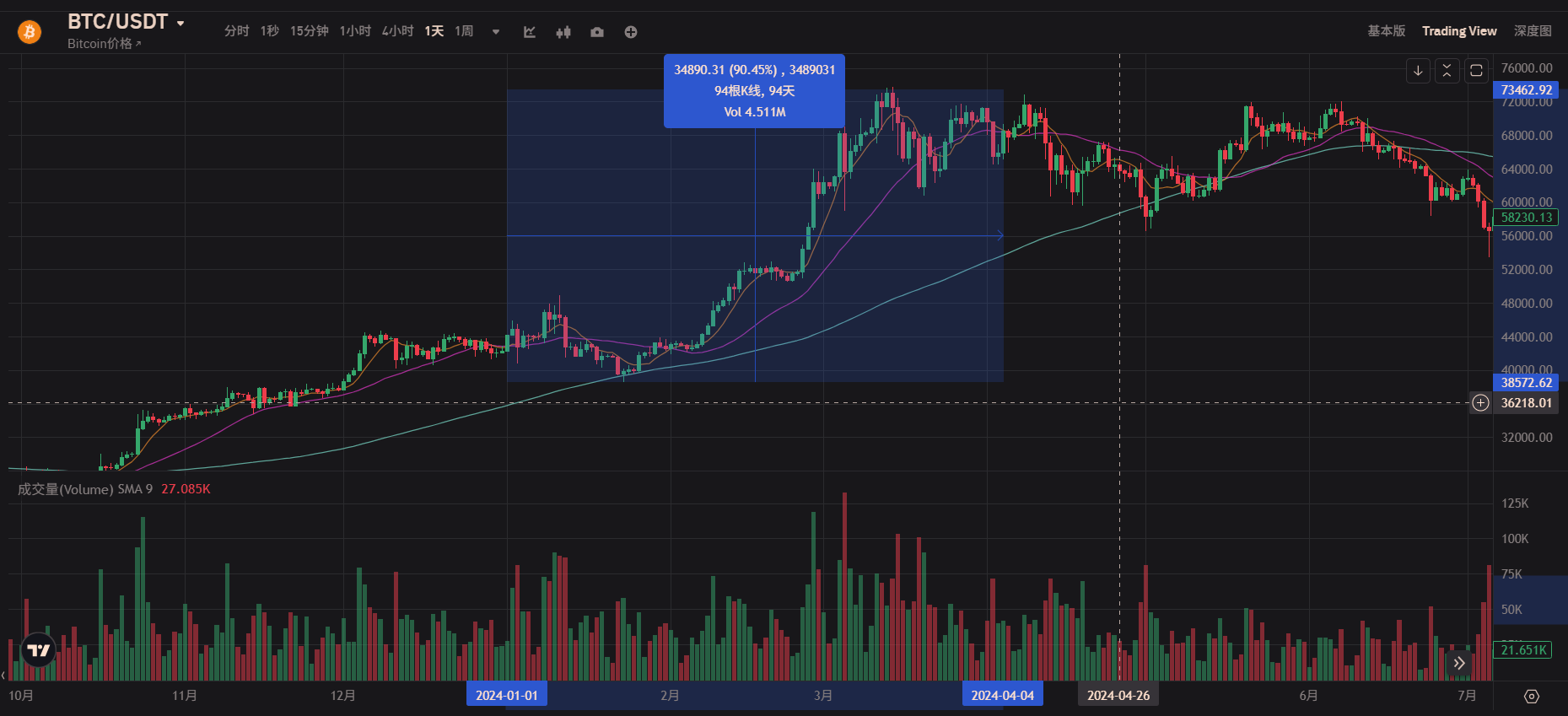
2.4 Four Blows: Striking the Bull-Bear Model
The past bull-bear model was built on the premise of clear trends, orderly volatility, and expected regression. But today’s market has long derailed.
The sideways range has turned into a "wolf valley": in 2023, the prices of the S&P 500 and Bitcoin repeatedly swept losses within a ±10% narrow range. J.P. Morgan data shows that between March and July alone, there were 17 instances of 1.5% false breakouts, and trend traders were ground down to "metal shavings."
Rebalancing strategies have become self-harm: BlackRock reports that passive funds now account for 54% of the freely circulating market value of U.S. stocks, and these funds mechanically adjust quarterly, but due to liquidity exhaustion, they cause significant slippage. By the end of 2023, a single weight adjustment in the Nasdaq evaporated $18 billion in one day.
In an era dominated by events, mean reversion has been shattered: a single tweet or regulatory signal can cause market tremors. In June 2024, the SEC's re-examination of Ethereum's security status caused ETH to plummet 12% in a day, only to recover half of it two days later.
Professional funds are voting with their feet: according to HFR, the assets under management of global trend-following funds have shrunk by one-third since their peak in 2015, while multi-strategy and market-neutral funds have expanded against the trend, indicating that old-fashioned "bull-bear believers" have exited, and the market is welcoming the era of "wolf and eagle hunters."
2.5 Summary
The bull-bear model is not wrong; it was simply born in an era with simpler logic: at that time, correlations were singular, volatility was predictable, and policies were synchronized.
But today’s market is like a spilled palette:
Central bank path divergence, liquidity distortion, fragmented news, and nonlinear feedback from algorithmic trading… have turned this candlestick chart into a full spectrum of red, orange, yellow, green, cyan, blue, and purple.
If you still view this market through a black-and-white filter, you are bound to misread the wind direction and miss the rhythm at critical junctures.
Embracing the "wolf" and "eagle" is not about curiosity; it's about returning to reality.
Next time someone asks you, "Is the bull market about to end?" perhaps you should first ask: "Is it a wolf wind, an eagle flow, or a bear tide?"
Because only by knowing the answer can your strategy have direction.
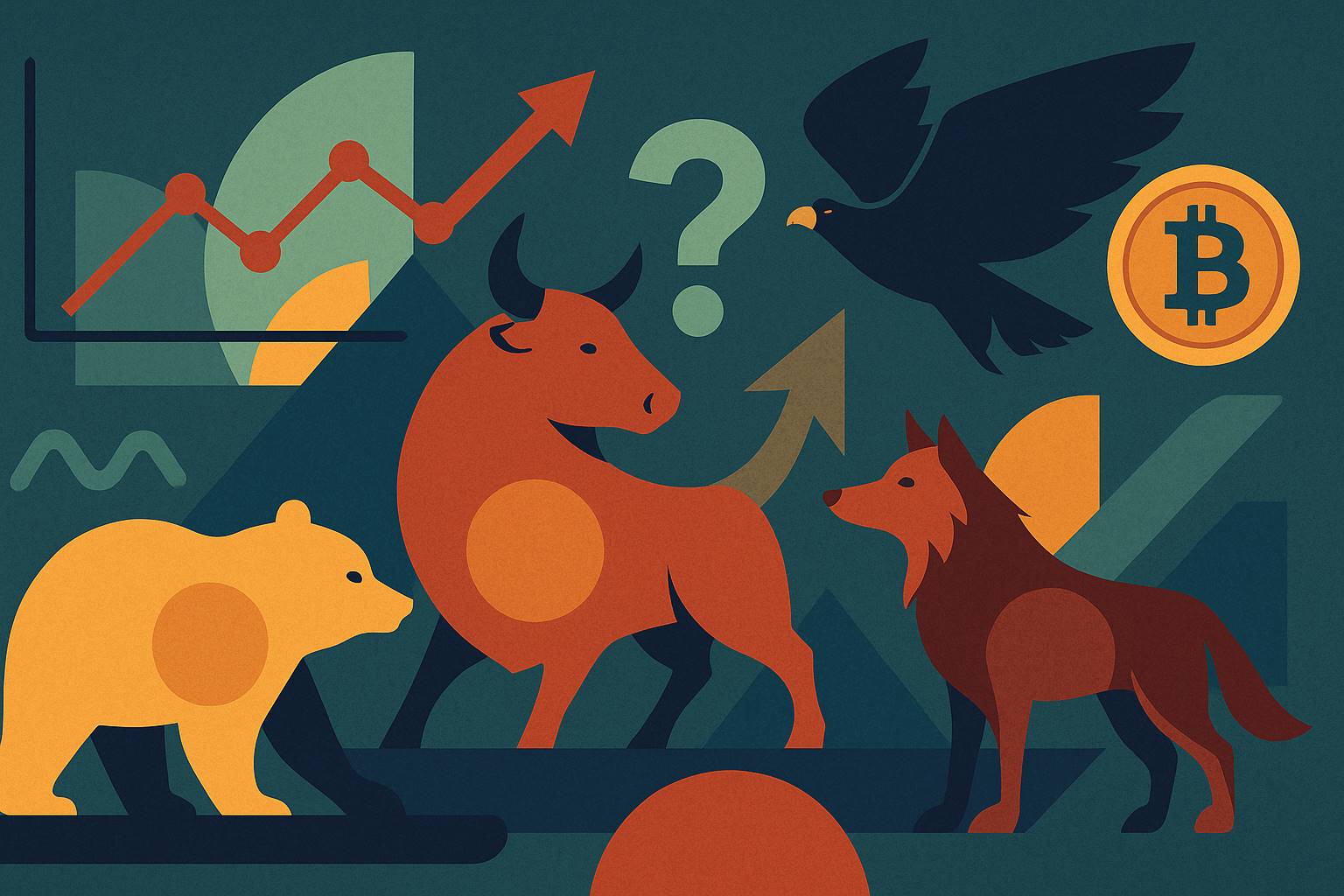
3. New Model × Crypto Pockets: MMI's On-Chain Practice
We have seen that the bull-bear model is no longer sufficient; the market needs a more nuanced "climatology." With a more precise map, the next consideration is: how to dress appropriately and keep pace in this four-season rotating on-chain environment?
This is where the MMI strategy (Multi-Modal Investing) comes into play.
MMI is an asset allocation model based on a market state-matching strategy portfolio, originally used in the four-quadrant environment of traditional assets. Now, it has been adapted to the blockchain, with the core idea unchanged, but the equipment has shifted from stocks, bonds, and volatility funds to stablecoins, perpetual contracts, liquidity mining, and high-beta tokens.
We break it down into four "pockets," so when a market trend arrives, you know which weapon to pull out.
3.1 Prepare Four On-Chain Pockets
3.1.1 Bear Market Pocket: Stablecoins + On-Chain Short Bonds
Scenario Characteristics: BTC/ETH has retraced over 20% from its peak, frequent on-chain liquidations, and liquidity exhaustion.
Stablecoins are your cash reserves. Looking back at the week of the FTX collapse in 2022, the trading volume of USDT/USDC once accounted for 81% of the entire network, 15 percentage points higher than usual (data source: Kaiko Research). That week, whoever held "stablecoins" could pick up gold everywhere.
On-chain U.S. Treasury bonds allow you to sleep soundly in the eye of the storm. Tokenized short bond products like OUSG from Ondo Finance brought 5% U.S. Treasury interest on-chain, appearing exceptionally calm during days when BTC's annualized volatility exceeded 60%.
Hedging "gold" tokens truly withstand panic. For example, PAXG: during the three major sell-off cycles from 2020 to 2024, its correlation with BTC remained stable between -0.3 and -0.4, making it a genuine on-chain counter-cyclical asset.
3.1.2 Bull Market Pocket: Long-Term Holding + Staking Reinvestment
Scenario Characteristics: BTC and ETH continue to rise, with active on-chain addresses, TVL, and stablecoin inflows blooming in multiple areas.
BTC and ETH are the most stable "dual kings Beta" in a bull market. CoinShares data shows that from 2025 to date, Bitcoin alone has attracted a net inflow of $6.2 billion into crypto funds, accounting for 54% of all inflows. The fruits of a long bull market still grow on these two big trees.
Staking is the "dividend reinvestment" of an on-chain bull market. LBTC (Lombard), weETH, and stETH not only enjoy price increases but also continue to compound. You don’t need to frequently adjust your positions to "profit while you sleep."
3.1.3 Wolf Market Pocket: Opportunistic Arbitrage + Market Neutral Strategies + Selling Volatility as King
Scenario Characteristics: Prices oscillate repeatedly within a ±10% range, frequent false breakouts, and the market "cannot find direction."
Engage in basis/funding fee arbitrage, picking up shells as volatility "recedes." In Q2 2023, the annualized basis between BTC spot and perpetual contracts reached 8-12%. You only need to go long on the spot and short the perp, earning a stable 2-3% directional profit each month.
Uniswap v3 provides liquidity. Place BTC-ETH in a 10% narrow range and lock Delta with perpetual contracts, achieving an annualized fee of 25-35% (data: DeFiLlama).
In a wolf market, it’s not about betting on direction but about collecting "gold coins from the dust."
3.1.4 Eagle Market Pocket: Concentrated Attack + Leveraged Perpetuals + High-Beta Public Chains
Scenario Characteristics: Volatility drops sharply, prices rise along the 30-day moving average, soaring without looking back.
Leverage is the "rocket capsule" for capturing an eagle market. In Q1 2025, BTC with 2x leverage saw a three-month increase of 142%, while spot BTC only rose by 70%.
High-beta public chains are the "on-chain NVIDIA" of the new cycle. Solana is one of the more promising options after ETH.
Note that in an eagle market, it’s not about casting a wide net to catch fish; it’s about choosing the right rocket and holding on tight as it flies.
3.2 Personal Practice: Three Steps to Put MMI into Your On-Chain Wallet
Step One: Fill the Four "Crypto Pockets" with Funds
Bear Market Pocket: USDC/DAI + TBILL tokens + PAXG
Bull Market Pocket: BTC + ETH (long-term holding + staking)
Wolf Market Pocket: perp basis arbitrage + AMM delta neutral LP
Eagle Market Pocket: BTC/ETH/SOL leveraged perpetuals or 2x ETFs
Each pocket should account for 25%.
Step Two: Set Up "Autopilot Logic"
After configuring the bear and bull pockets, try to leave them unchanged, buying in reverse during market panic.
The wolf pocket can be semi-automated: for example, liquidity mining with BTC-ETH on the Base chain; perp arbitrage recommends BTC and ETH, focusing only on low-risk varieties.
The eagle pocket controls two things: leverage should not exceed 3x, and only select core assets supported by long-term narratives, such as BTC, ETH, and SOL.
Step Three: Adjust Positions with "Scissors" Instead of a "Hammer"
The recommended fluctuation range for pocket weights is 15% to 35%;
Adjust only 5-10% at a time to reduce misjudgments and execution costs.
This configuration is like your "wardrobe" for on-chain investments:
Whether it’s a wolf wind blowing, an eagle flow surging, or a bear tide attacking, you always have four sets of "protective gear" suitable for the weather.
Market conditions can be unpredictable, but the rhythm can be stable. MMI does not predict the market; it accompanies you through it.
The above is just a rough operational logic; I will detail it in the "Alpha Daii" knowledge community.

Conclusion | Investing is not about predicting the future, but being prepared to face all futures
Let me conclude this topic with a personal experience.
In April of this year, when Bitcoin fell below $80,000, the market was in a panic. I did not predict where the bottom would be, nor did I dare to guarantee it would rebound immediately. But I used the $10,000 in stablecoins from my "bear pocket" to open a 3x leveraged BTC-ETH liquidity mining position. Today, it has turned into $31,000, with returns exceeding 300%.

I have written a detailed operational breakdown in the "Alpha Daii" knowledge community, which you can check out if you're interested. But the key point I want to make is not "I made money," but rather:
I did not win this trade by predicting; I won it by being prepared.
The market is not a one-way street; it is a city with four seasons.
If your mind only has "bull market" and "bear market," then at every corner, you can only rely on guessing:
Guess right means "cashing out at a high," guess wrong means "regretting it later."
But if you have prepared a four-season wardrobe for yourself in advance—down jackets for bears, windbreakers for wolves, running shoes for eagles, and short sleeves for bulls—then no matter how fierce the fluctuations, it’s just a seasonal change.
The "four-pocket thinking" of MMI is not metaphysics, nor is it a flashy strategy platter; it is a way of life.
Its essence:
Transforming the high-pressure decision of "Should I sell now?" into the daily rhythm of "What should I wear today?"
True investment experts are never prophets of the market; they are the stewards of their own emotions and positions.
In the crypto world, your "pockets" may hold stablecoins, staking yields, arbitrage bots, and leveraged perpetuals; in traditional markets, they may contain cash, short bonds, low-volatility strategies, or momentum ETFs.
What you need to do is never to predict the market but to:
Set up your four pockets, write your own rulebook, and periodically use "scissors" to fine-tune your position ratios.
Because seasons will change, the sun will rise, but you must ensure:
You have an umbrella when it rains, clothes when the wind blows, arrows when it peaks, and shields when it consolidates.
—The rest is left to the market and time.
免责声明:本文章仅代表作者个人观点,不代表本平台的立场和观点。本文章仅供信息分享,不构成对任何人的任何投资建议。用户与作者之间的任何争议,与本平台无关。如网页中刊载的文章或图片涉及侵权,请提供相关的权利证明和身份证明发送邮件到support@aicoin.com,本平台相关工作人员将会进行核查。




